Chapter 4: Conducting the BCM Audit
This chapter delves into the practical aspects of conducting a Business Continuity Management (BCM) audit. It outlines the different types of audits, explores various methodologies for information gathering, and provides guidance on effectively evaluating the organization's BCM program.
Types of BCM Audits
There are three primary types of BCM audits, each serving a distinct purpose:
- Internal Audits: Conducted by the organization's internal audit team or designated personnel. These audits provide an independent and objective assessment of the BCM program's effectiveness.
- External Audits: Performed by an external audit firm specializing in BCM. External audits offer a fresh perspective and expertise not readily available within the organization.
- Certification Audits: Conducted by an accredited certification body to assess an organization's BCM program against a specific standard, such as ISO 22301. Successful completion leads to certification, demonstrating compliance with the standard.
BCM Audit Methodology
The chosen BCM audit methodology dictates the approach taken to gather information and evaluate the program. Here are some common methodologies:
- Risk-Based Approach: Focuses on areas with the highest potential for disruption, prioritizing critical business functions (CBFs) and associated risks.
- Compliance-Based Approach: Emphasizes verification of adherence to established standards and regulations, such as ISO 22301 or industry-specific BCM requirements.
- Process-Based Approach: Evaluates the effectiveness of each stage within the BCM lifecycle, including risk assessment, BIA, BCP development, testing, and ongoing management.
Information Gathering Techniques
Effective BCM audits rely on a combination of information gathering techniques to obtain a comprehensive understanding of the program. These techniques include:
- Document Review: Reviewing relevant BCM documentation such as risk assessments, BIAs, BCPs, testing records, and training materials.
- Interviews: Conducting interviews with key personnel involved in the BCM program, including management, BCM team members, and subject matter experts.
- Site Visits: Visiting critical facilities or departments to observe BCM practices and assess preparedness firsthand (if applicable).
- Testing Observation: If scheduled during the audit timeframe, observing BCP testing exercises to evaluate their effectiveness.
Evaluating the BCM Program
The gathered information is used to evaluate the BCM program against defined criteria, which may include:
- Alignment with Standards and Regulations: Ensuring the program aligns with ISO 22301 and any relevant industry-specific BCM standards.
- Completeness of Documentation: Verifying that all necessary BCM documentation is present, up-to-date, and readily accessible.
- Effectiveness of Procedures: Assessing the effectiveness of BCM procedures for risk assessment, BIA, BCP development, incident response, and recovery activities.
- Testing and Exercising: Evaluating the frequency and effectiveness of BCP testing and exercising programs.
- Management Commitment: Assessing the level of management involvement and support for the BCM program.
Maintaining Confidentiality
During the BCM audit, auditors may encounter sensitive information. It's crucial to maintain confidentiality throughout the process by:
- Obtaining necessary permissions: Acquiring authorization for accessing sensitive documentation and conducting interviews.
- Using secure data storage: Employing secure methods for storing and handling confidential information.
- Limiting access: Restricting access to sensitive information only to authorized audit team members.
Summing Up ...
By employing a well-defined methodology, utilizing appropriate information gathering techniques, and adhering to confidentiality principles, auditors can effectively assess the strengths and weaknesses of the BCM program. This comprehensive evaluation provides valuable insights that can be used to identify areas for improvement and ultimately enhance the organization's resilience.
More Information About Blended Learning Auditing BCMS Courses
BCM Institute offers two levels of BCM auditing courses: A-3 BCM-8030 ISO22301 BCMS Auditor [A-3] and the ISO22301 BCMS Lead Auditor [A-5].
 |
![TMM [BL-A-5]](https://no-cache.hubspot.com/cta/default/3893111/e7af9322-15cb-412d-91b6-59cd388ee6e9.png) |
![Register [BL-A-5]](https://no-cache.hubspot.com/cta/default/3893111/bb38417e-6241-4057-b90c-f319f31a494e.png) |
 |
 |
 |




![Email to Sales Team [BCM Institute]](https://no-cache.hubspot.com/cta/default/3893111/3c53daeb-2836-4843-b0e0-645baee2ab9e.png)



